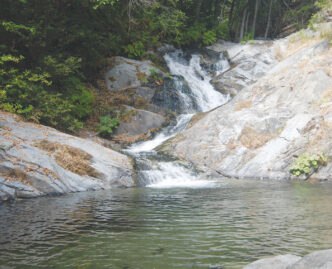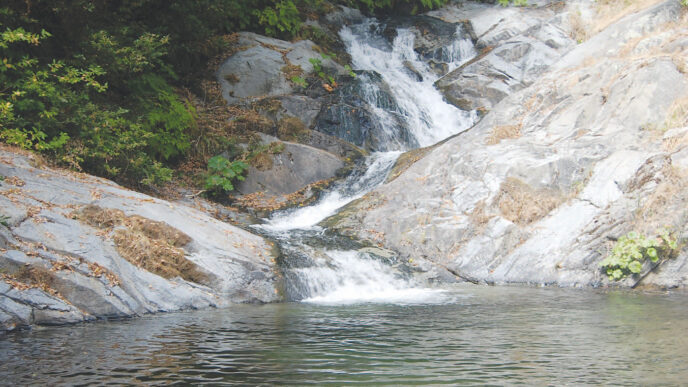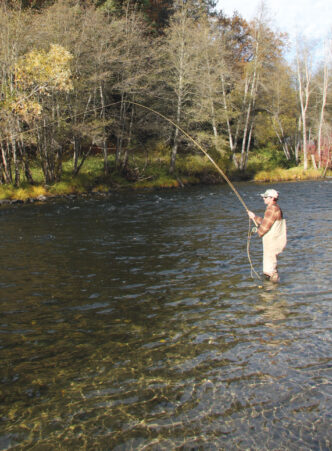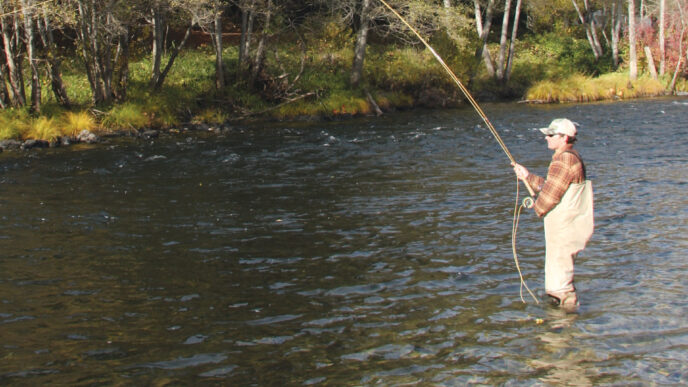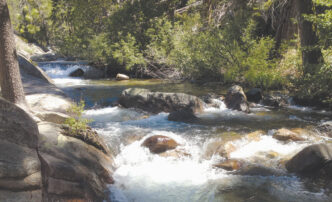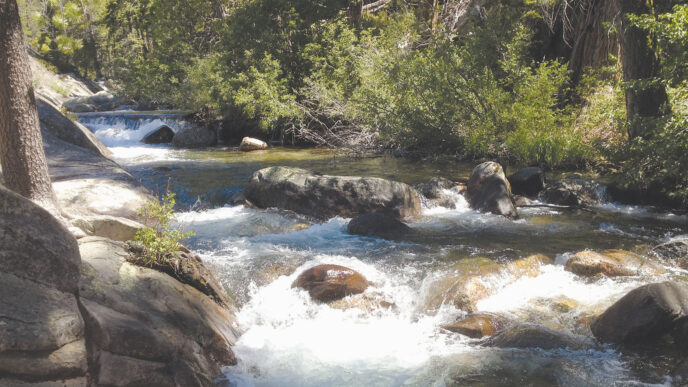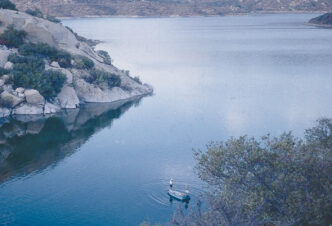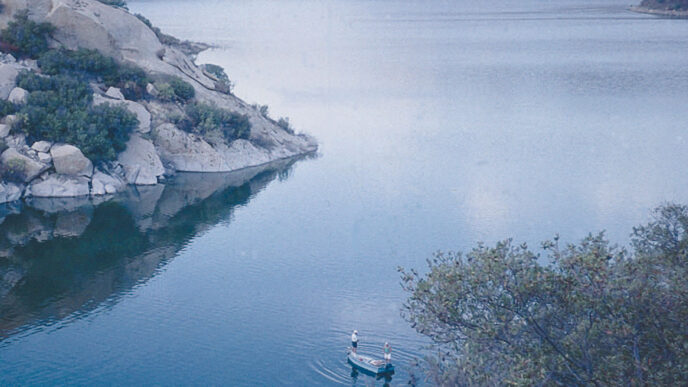In Spain, they call it la plancha. In Argentina and Chile, they call it the chapa. In our country, it’s an old-fashioned iron skillet, griddle, or short-order grill. They come in the form of rectangles or squares and in circular and oval shapes, but a common thread in the construction is iron. In Spain, the mention of la plancha evokes a style and a method of cooking that is exciting and immensely flavorful. It is said in the bars of Madrid and Granada that “the hot iron sings to the food.” In a tapas bar, la plancha is placed over a gas fire for the fast cooking of the little snacks that are often called “small plates” in this country. But various versions of la plancha and the chapa really shine in camp cooking, outdoors over an open wood fire.
Cooking on an open fire is more than mere meal preparation. It is a celebration of life that takes us back to our primal roots. It makes every meal a social gathering, and it gives us opportunities to recount our day’s adventures in front of a willing and appreciative audience. Most importantly, if done right, the meals prepared can be treasured and remembered, as are the friends who are present.
I buy wholly into this philosophy, and with fellow angling friends, I try to make every camp meal something special, whether it is a quick hamburger after late fishing chasing the Hexagenia hatch or a sumptuous Sunday supper on the river with family and friends.
Cooking on cast iron has a real place in cooking camp fare. As good as open-fire grilling can be, don’t always let it be the default setting for your meat courses. The Food Network and the Cooking Channel have shown us that there are more and better ways to cook over an open fire than the familiar backyard grill and barbecue. Angling trips to Chile and Argentina and cooking schools in Spain, the Yucatan, and Portugal have showed me new methods and ingredients for food preparation and flavor development that I have brought home and incorporated in much of my meal preparation.
One source for how I now cook camp fare is Francis Mallmann, Argentina’s greatest chef. He also is an outdoorsman who camps, rides, hunts, and fishes. His great success came after he abandoned aspects of his classical, European-trained, French methods and went to cooking over open fires using Argentine recipes and methods in his high-end restaurants, as well as on the family cattle ranch, in media cooking demonstrations, and at his Andean mountain lake vacation home. He utilizes seven techniques in his open fire cooking, described inspiringly in his book Seven Fires: Grilling the Argentine Way (Artisan, 2009). The chapa may well be his favorite. He likes the chapa for fish, pork, scallops, squid, anchovies, and other meat.
Vegetables and fruits, too. Examples are the quick cooking in the chapa of cut tomato, asparagus, orange, pineapple, lemon, or fresh peach slices. Heat caramelizes their sugars and brings out flavors that you’ve only imagined. Try it on half a cut Meyer lemon or a Key lime. Like Bobby Flay, I cook fresh summer corn ears over a flame or put cut kernels on la plancha before incorporating them into a dish or a salad, because the heat caramelizes the sugar and brings out intense flavors.
But cooking on la plancha is also as (North) American as apple pie. As a child, I spent summers on a West Texas ranch where my Aunt Mable cooked on a woodfired stove using cast-iron skillets: la plancha with a Texas accent. Aunt Mable’s cast-iron skillet still makes a good plancha, and Lodge Logic makes cast-iron skillets, Dutch ovens, and reversible griddles that easily serve as perfect, high-quality planchas or chapas. These griddles are heavy iron rectangles that come in different sizes and work on top of natural gas or propane stoves, as well as over wood fires. A nice feature is the circumferential ridge on the edge that catches juices and oil. Reverse it, and you have a series of diagonal ridges for grilling meat and fish. They impart those grill marks that make your meat look so good. Cooking stores and specialty food shops often stock similar products, as do the big-box outdoor stores. Another source is a supermercado, a Latin grocery, here or south of the border, and the cost will be a lot less. Quarter-inch steel plate cut to your dimensions also works quite well as a cooking surface. Google plancha or chapa if you want to be authentic.
In fish camp, I look for or bring a good steel campfire ring. Rocks work, too, in undeveloped campsites. I build a fire on one side of the circle and rake coals to the other as they develop. With la plancha and a grill rack suspended from my iron tripod, I can cook my entire meal right at the campfire, so I don’t miss out on the evening’s conversation. The aromas rising from that campfire ring will make your guests salivate, and there will be no leftovers. An added benefit is that you are right there, watching everything cook, with less chance of a making mistakes through inattention.
I do vegetables on the plancha and steaks, chicken, turkey, goat, or lamb on the grill suspended over the coals. If the fire ring is large enough, a Dutch oven can be baking a peach cobbler at the same time, but you could do peach halves with orange confit on the plancha as well for dessert. I make the chimichurri sauce for the steaks or lamb in advance at home. Often sauces and side dishes can be done ahead to save prep time in camp. You just have to learn what travels well.
Among cooks, there is a legend about a famous Los Angeles celebrity chef who paid horse packers to pack an entire woodburning stove, provisions, oven, and miniature wine cellar into the Hoover Wilderness for his annual two-week escape from his high-pressure job in Lotus Land. However, as that legend suggests, outdoor kitchens in camp can get out of hand, and I think part of the fun of outdoor cooking is improvising food preparation. I did it to travel light and save money when I worked on the Lost Coast as a timber cruiser, and my wife and I cooked on a small Japanese hibachi for six months in our first home in the Philippines. I built a charcoal-fired oven out of coat hangers and aluminum foil in a corner of our stone security wall for our first Thanksgiving away from home. We had a lot to be thankful for. It’s one reason why we still celebrate life at every sit-down meal.
Plan simple, quick meals as well as an occasional more elaborate affair. If camp is a one-nighter, things of necessity must be quite basic. I don’t want to spend an hour unpacking and another loading up. Better yet, stay a few days and set up a simple, but efficient kitchen.
Lillian Otal, in Plancha: 150 Great Recipes For Spanish-Style Grilling (Surrey Books, 2011) gives 150 recipes that can be prepared quickly for a memorable meal with a simple flat piece of iron and some imagination, at home or in camp. A plancha recipe that evolved on an extended Baja camping and fishing trip with daily fresh-caught dorado or cabrilla follows.
Fresh Fish with Tomatillos, Tomatoes, Sweet Onions, Garlic, and Cilantro
Fish fillets
1/2 cup seasoned flour (Cajun spices or chipotle)
High-flash-point cooking oil (I prefer peanut oil, which is neutral in flavor.)
Quartered tomatoes, tomatillos, sweet onions and garlic
1/4 cup diced bacon, or better, yet Italian pancetta
1 cup bomba paella rice (other varieties work, but bomba is best)
Good pinch of real Spanish saffron, not the adulterated stuff that is mostly turmeric
Low-sodium chicken stock
Cilantro and fresh limes
Salt
Dredge the fish fillets in seasoned flour, then sauté on la plancha with a little oil, turning once and removing when the crust is golden. At the same time, sauté the onions, tomatillos, garlic, and tomato quarters on the other end of la plancha until you see caramelization. You may need another cook surface if the portions are large. Add the garlic late to avoid burning, which will produce bitterness. Season the vegetables while cooking with subtle amounts of Cajun or chipotle spice and just a pinch of salt to marry the flavors.
Prepare saffron rice by sautéing the bacon or pancetta, then adding the rice grains and stirring for several minutes. In a variation, I add diced onion, as well. Add the chicken stock and a generous pinch of true saffron and simmer for 20 minutes. Get the full benefit of the saffron flavor by dissolving it in lemon juice or white wine for 10 minutes before adding it to the mix. I like to serve the fish on top of the tomatillo mix on top of the rice in vertical plating. Garnish with cilantro and lime wedges. Zinfandel, a good tempranillo, or an Argentine Malbec does this dish justice and holds up to the sumptuous, spicy flavors, as does an acidic, fruity white such as a Spanish or Argentine torrentes. Pinot grigio or sauvignon blanc work equally well. Simmer fresh peach or orange halves in season on la plancha for desert.
Trout (la trucha) works very well with this dish, as does a double-cut, bone-in pork chop. Or substitute turkey loins for the fish and forget the rice. My wife suggested corn tortillas to go with these. We threw them on the grill after grating on a small bit of Cotija cheese. Next I spread a layer of the hot, caramelized vegetables that included red and yellow sweet peppers. Sliced turkey medallions went on top, I finished it with some cilantro for a tasty, low-fat meal. Those tortillas absorbed the juices from the vegetables and the turkey … and they’d be much easier in camp than cooking a skillet of rice. Just heat them on the grill grate, and you don’t have to carry and clean an extra dish. Tortillas travel very well, too.
Don’t you wish your local Mexican restaurant served such fare without needing to add half a plate of rice and beans? Anyone bring a guitar?
Burgers in Truckee
Installment 1: The Lodge at Tahoe Donner
By Richard Anderson
There are people who love hamburgers and people who don’t. I fall into the former category. For me, a well-prepared burger is an intensely satisfying meal, with each bite ideally providing a taste of richly flavored beef complemented by onion, pickle, tomato, and lettuce, with the bun adding its own qualities and serving as a vehicle for condiments and a way to keep in hand those wonderful juices that good beef exudes.
A burger also tends to be an affordable meal, which is important, because when I am fishing, I am fishing hard, and I usually stay on the water until I can no longer see my fly. Afterward, I often just want to relax at a restaurant, rather than expend even more effort over stove or grill, so a burger provides an easy way to dine without too much of an impact to the wallet.
One more thing. If I am having a burger for dinner, I want a sit-down meal with table service. Standing in line at a fast-food restaurant is not an adequate way to honor the end of the day. Give me pleasant surroundings, a convivial ambiance, and a burger worth the time and money.
Truckee is, of course, a destination for fly fishers, and it offers a number of restaurants that serve hamburgers for dinner. Most of these burgers are in fact quite tasty. Having a craving on a recent Tuesday evening, Carole and I headed up into Tahoe Donner, Truckee’s primary second home subdivision, to chow down at The Lodge, which we especially like to visit during the summer. The building, relatively new, has a clean, modern-cabin feel. Both the dining room and bar, each with outside deck seating, look westward over a well-maintained golf course set amid the forest — a nice place to find oneself as the sun descends behind the Sierra Crest.
Although we prefer to dine on the deck when temperatures allow, this visit took place on a “no-corkage Tuesday,” and because of the crowd, we had to settle for a table in a corner nook of the bar, which actually turned out perfect for people watching. We began our meal with a Lodge Wedge Salad that we split between the two of us (iceberg lettuce, red onion, tomato, smoked bacon, and blue cheese dressing; $9.95). Its crunch and coolness serve as a nice counterpoint to the subsequent hamburger.
The Lodge Burger costs $12.95, which puts it at the lower end of fine burger prices in Truckee. The Angus beef comes grilled on a soft bun, accompanied by lettuce, tomato, red onion, dill pickle sliced lengthwise, and either Swiss or cheddar cheese. Shoestring fries are delivered in an upright paper cone, which I suppose makes them easier to eat, but we usually just dump them onto our plates to get rid of the visual obstruction. Ketchup in a small ramekin is the only condiment provided; if you want others, such as mustard or mayonnaise, you need to ask.
We ordered our burgers medium rare, and despite the sizable number of diners in both bar and dining room, they indeed arrived medium rare. And warm. The beef had grill marks and tasted of the fire, which is good. We each dressed them in the manner desired and took our first bites. A dribble of juice began its descent toward my chin, and Carole, smiling, reached over to wipe it away. Ah, burger bliss.
Postscript: I had decided to order a martini for my initial adult beverage. The Lodge’s cocktail list offers a “traditional” martini with Hendricks gin that is priced, if I recall correctly, at $12. It also lists a martini made with Jagged Peaks gin, priced at $8.50, which I ordered, both because of the lower cost and because I had not heard of this particular brand. Turns out Jagged Peaks gin is distilled in South Lake Tahoe by Tahoe Moonshine Distillery (established in 2010), and according to the Web, it is infused with juniper berries, cardamom, coriander, rose petals, ginger, and cucumber. I think it was that final ingredient, the cuke, that caught my attention. It’s something I’ll try again.
The Lodge is located at 12850 Northwoods Boulevard in Truckee’s Tahoe Donner neighborhood (the northwest side of town). Dinner is served from 5:00 P.M. to 9:00 P.M. daily, and if you like, reservations can be made by phoning (530) 5879455. (We’ve never done so, but over time, this might change.) You can find more information on the Web at http://www.tahoedonner.com/the-lodge.
Burgers in Truckee
Installment 2: PJ’s Bar and Grill
By Richard Anderson
What is it with golf courses and mountain settings? Between 2003 and 2008, five golf-course–centered subdivisions began development in the Truckee area. These are intended as second-home communities that provide an outdoors-focused “resort” lifestyle. For the developer, a golf course bumps up land value by providing a desirable recreational amenity, by creating a marketing identity, and by enhancing the physical attractiveness of home sites.
Using golf courses to sell homes is not a new business model (Tahoe Donner employed it back in the 1970s), and it is also certainly not without risk. When the Great Recession hit a few years ago, one of the newest of these projects, Gray’s Crossing, suffered a serious enough financial setback that its developer, East West Partners, filed for bankruptcy. That action, however, had a silver lining: it effectively meant that the bistro-style restaurant at Gray’s Crossing’s golf course, PJ’s, would no longer be open to members only. As of last summer, the public could dine there, as well, which is when Carole and I — and a growing number of Truckee locals — discovered the place.
Situated adjacent to the golf course clubhouse, PJ’s is a low, heavy-beamed, architecturally distinctive shed-roofed structure built partially into a hillside and facing east toward the Mt. Rose massif. Its indoor dining area extends naturally onto a paved patio, which in turn abuts a lawn that echoes the golf course setting and provides a place for children to gambol while their parents enjoy adult drinks and conversation. Tables are set on both patio and lawn, which in the evening allows for a very pleasant outdoor dining experience.
PJ’s hamburger ($14) is similar to other fine burgers offered in Truckee: a half-pound patty of grilled “certified Angus” beef set on a toasted brioche bun with PJ’s special burger sauce, a choice of four cheeses, plus lettuce, tomato, red onion, pickles sliced lengthwise, and a handful of fries on the side. In a word, it’s good. Occasionally, the meat is underseasoned or, if the place is busy, might come to the table cooked longer than requested, but these issues are minor and occur at all of the restaurants in town that serve quality hamburgers. Frankly, we visit PJ’s as much for the setting. It’s a comfortable place to relax outside with friends. And if you’re wetting a line at . . . uh, well, geez, I forgot its name … your drive to a nice burger dinner will be quite short.
PJ’s Bar and Grill is at 11406 Henness Road, which intersects with Prosser Dam Road a short distance off of Highway 89. You can make reservations at (530) 550-5801. From my experience, these have not been necessary, but it is a small place and becoming better known. PJ’s is open during the golf season from 7:00 A.M. to 9:00 P.M. daily.
Future installments of “Burgers in Truckee” will cover the Bar of America, Cottonwood, and other restaurants.






